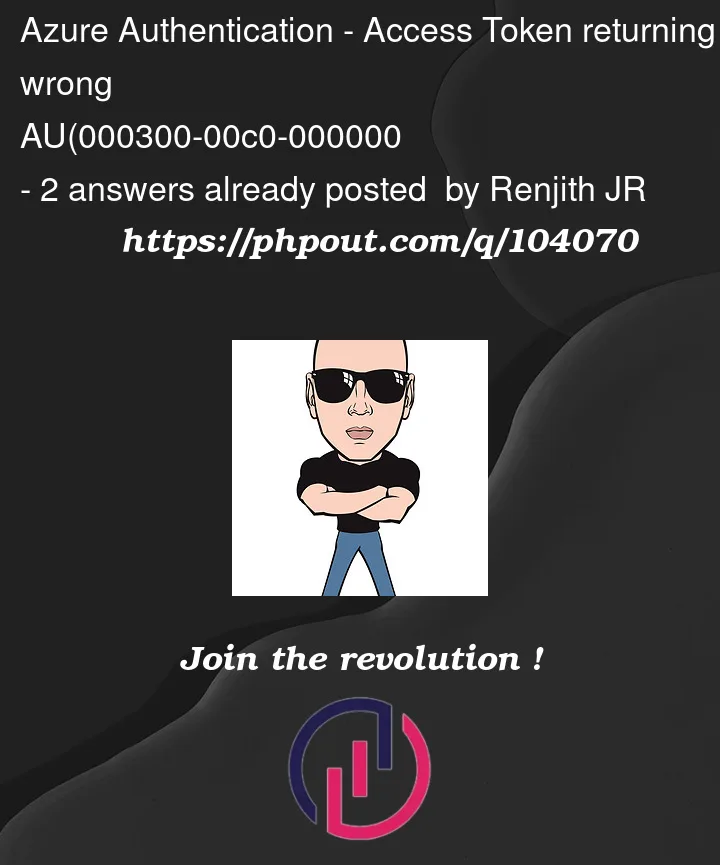I’m trying to authenticate with API Management in Azure through OAuth. I’ve set up that piece fine.
However from the response, the aud(00000003-0000-0000-c000-000000000000) is invalid from the access token.
Any suggestions/ideas to get the accurate aud in access_token.




2
Answers
I tried to reproduce the same in my environment and got the results like below:
I generated the access token with the same
audas you and got the validation error:I agree with juunas, To authenticate with API Management in Azure through OAuth, make sure to pass the scope while generating the access token.
I created an Azure AD Application, exposed an API and added scope like below:
Added API permissions like below:
To resolve the error, make sure to pass scope as
api://AppID/.default.A valid access token to access APIM will be generated like below:
References:
OAuth 2.0 Authorisation with the Client Credentials Flow on Azure API Management by Paco de la Cruz
Connect React App with Azure AD using react msal by Ray
You have mistaken the values.
TL;DR: ignore "access token", obtain and read "id token" and verify that "aud" field is your client ID.
First you might obtain a single-use access code (likely something like 0.ABC). Optionally you could fetch open id token. "scope" must include "openid"
Then you can fetch actual open id token using the single-use code. "scope" must be "openid" again. Response might include:
Always check the "aud" as this says who is the token created for. If it is not you – the token is not for you.